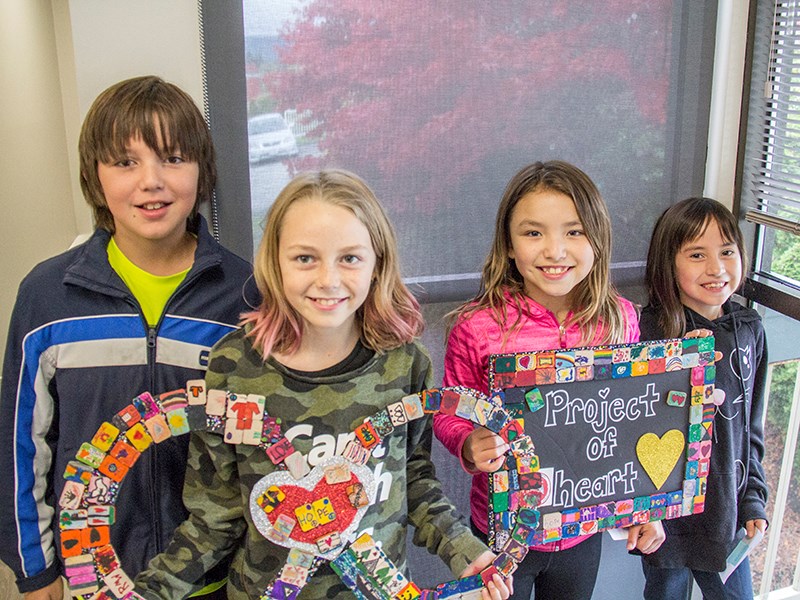Within BC’s new education curriculum, first nations studies are now front and centre. Throughout the province, students as young as 10 years old are being taught about past discriminatory government policies toward aboriginal people that resulted in the residential-school system.
New curriculum changes, which include a focus on aboriginal history and culture, are now being implemented at elementary schools, where lessons of truth and reconciliation are taught.
“It’s really important to touch on it through the whole school and not just have it as an aside,” said James Thomson Elementary School principal Jasmine Marshman.
Students at the school recently completed an assignment entitled, Project of Heart, which included lessons and a hands-on art project for students to better understand the legacy of residential schools. Karina Peters, James Thomson’s teacher for first nations studies, presented an age-appropriate lesson on the subject of residential schools to every class from kindergarten to grade seven.
According to Peters, students of all ages were responsive to the lessons.
“For the younger kids, I did a very light introduction, just explaining that kids were taken away from families but they did return,” said Peters. Among older students in intermediate grades, Peters said she went deeper, which resulted in “really great, critically thinking questions from them.”
Peters said students in intermediate grades were taught more about the tragic experiences of aboriginal youth who were taken and sent to residential schools, and the consequences of that dark period in Canadian history.
“I’d say some of them were very much aware,” said Peters. “For some of them it was new and they did have more questions. I made sure to follow up after the lessons if they had any questions. It was kind of like a sharing circle.”
After the lessons, every child and staff member received a small wooden tile for the art project.
“They decorated it to be put together for a piece of art to show our support for those students who went and came back as survivors, and those who did not,” said Marshman.
In order to create three art pieces to reflect student understanding and support for aboriginal youth who went to residential schools, 300 tiles were used.
“Tiles that have a black edge are for those who did not make it and coloured tiles are for those who had family members that did go and came back,” said Marshman.
One Project of Heart art piece was presented to Tla’amin Nation, a second was presented to School District 47’s board of trustees and one was left for the school.
“It is visual, kids will see it and they’ll know what the tiles stand for and go deeper into the learning,” said Marshman. “As things come up through the curriculum, they can relate it back to this as well.”



